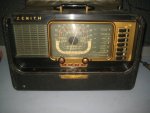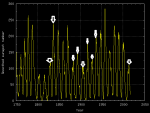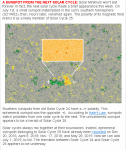S
simpilo
Guest
I seen the videos and tlked with people on the Radio Hobyists Discord channel. Took me a few months to decide on buying the Radiwow R-108. I have purchased one from Amazon using my Prime membership 1 day delivery perk. If nothing goes wrong I should have it in my hand by 9pm tonight (July 1, 2019).
It doesn't have SSB. I already have 2 SSB equipped radios. I wanted the airband receive. Another thing that caught my eye is the fact it has DSP technology. I also like it does have full shortwave coverage up to 30MHZ. I also plan to use it to monitor the 75 meter band Amateur AM operators with it. I'll play around with the various IF Bandwidth settings. I also like that it has a thermometer.
I may just buy a seperate BFO. Problem is the one I could find is out of the USA and sells for $45. I think in South America somewhere. Shipping wouldn't justify the cost of the BFO. I could make one myself. I'll see about it on MFJ's website. Maybe they have a BFO for radios lacking SSB demodulation.
I did some research about the radio's quirks. It is said to have a clicking sound due to the signal strength meter. Switching to thermometer or time eliminates it. It is said that the MW band on it has sensitivity issues turning it on. Turning it on and off again fixes it temporarily. One thing it better not have is a 1 or 2 khz frequency offset from center frequency like the Tecsun PL-600 is plagued with.
Seems to be a mixed bag of some who say shortwave is good on sensitivity and others say it's a portable it isn't that great. Let me make that determination. some my have received a radio from a bad batch from the manufacturer. I am rebellious to the nay sayers and skeptical of the yay sayers.
This morning my Tecsun received WWVH from Hawaii on both 10000khz and 15000khz. WWV 5000khz from Ft Colins Co, Thats band conditions. I also received SIBC on 9545khz. The signal was to weak for audio but noticeable on BFO. Solomon Islands is a very far stretch on the day side of Earth.
Now is the good time to learn radio performance as the sun transitions to Cycle 25. Cycle 24 is already done. All Cycle 24 family spots that have formed fizzled out rather quick. All the flux we get is baseline from active regions. Basically seasonal propagation is our friend. This is the real test of all receivers ever made. Grand Minimum is fake news. The sun solar cycle patterns suggests each solar cycle is different. The consensus of scientist are just a consensus and not really enough fact or knowledge to support their predictions. They will even tell you that.
I am no scientist but anyone can look at solar cycle in the past to determine the sun's patterns speaks a different story. We all don't know.
It doesn't have SSB. I already have 2 SSB equipped radios. I wanted the airband receive. Another thing that caught my eye is the fact it has DSP technology. I also like it does have full shortwave coverage up to 30MHZ. I also plan to use it to monitor the 75 meter band Amateur AM operators with it. I'll play around with the various IF Bandwidth settings. I also like that it has a thermometer.
I may just buy a seperate BFO. Problem is the one I could find is out of the USA and sells for $45. I think in South America somewhere. Shipping wouldn't justify the cost of the BFO. I could make one myself. I'll see about it on MFJ's website. Maybe they have a BFO for radios lacking SSB demodulation.
I did some research about the radio's quirks. It is said to have a clicking sound due to the signal strength meter. Switching to thermometer or time eliminates it. It is said that the MW band on it has sensitivity issues turning it on. Turning it on and off again fixes it temporarily. One thing it better not have is a 1 or 2 khz frequency offset from center frequency like the Tecsun PL-600 is plagued with.
Seems to be a mixed bag of some who say shortwave is good on sensitivity and others say it's a portable it isn't that great. Let me make that determination. some my have received a radio from a bad batch from the manufacturer. I am rebellious to the nay sayers and skeptical of the yay sayers.
This morning my Tecsun received WWVH from Hawaii on both 10000khz and 15000khz. WWV 5000khz from Ft Colins Co, Thats band conditions. I also received SIBC on 9545khz. The signal was to weak for audio but noticeable on BFO. Solomon Islands is a very far stretch on the day side of Earth.
Now is the good time to learn radio performance as the sun transitions to Cycle 25. Cycle 24 is already done. All Cycle 24 family spots that have formed fizzled out rather quick. All the flux we get is baseline from active regions. Basically seasonal propagation is our friend. This is the real test of all receivers ever made. Grand Minimum is fake news. The sun solar cycle patterns suggests each solar cycle is different. The consensus of scientist are just a consensus and not really enough fact or knowledge to support their predictions. They will even tell you that.
I am no scientist but anyone can look at solar cycle in the past to determine the sun's patterns speaks a different story. We all don't know.




